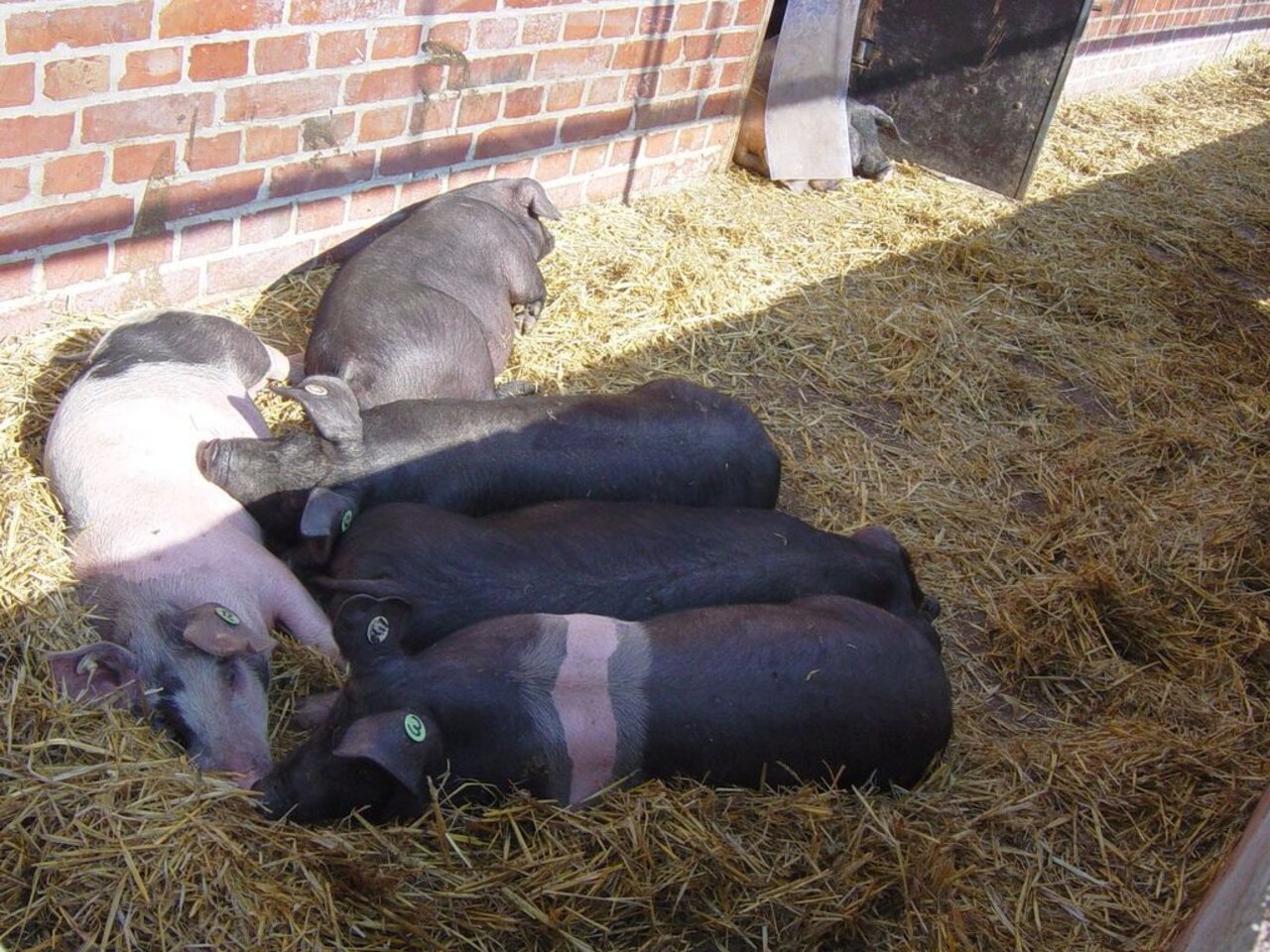Project
XXL pigs

Effects of, and interactions between pig genotype and dietary regimes on carcass, meat and processing quality characteristics in organic heavy pig production for dry fermented sausage manufacture
The high body fat synthesis capacity of old pig breeds results in low value creation within common pork production with a steady decline of those old breeds towards an endangered survival status.
Background and Objective
For dry fermented sausage production, castrated heavy pigs with more than 160 kg live weight are used due to the required fat quantity and fat quality. Today, most organic production systems use modern hybrids with often insufficient fat features.
The study aimed to examine the suitability of an old, endangered breed with a high de-novo fat synthesis capacity, like Saddlebacks, for dry fermented sausage production with the additional benefit of supporting the survival.
Approach
Three different genotypes (Saddleback: old endangered breed; Piétrain*Saddleback: modern, semi-intensive crossbreed; Hybrid: modern, intensive genotype) were combined with two roughage sources (grass-clover silage, straw) to six treatments under organic production conditions.
Data and Methods
A total of 132 castrates, evenly split into the six treatments, were analysed for performance, carcass-, and meat-quality, fatty acid pattern, product-quality of the sausage, and economic aspects.
Results
Performance, carcass quality, meat quality, and fatty acid pattern were significantly influenced by the genotype but not by the roughage. Hybrids showed the best and Saddlebacks the poorest performance. Concerning meat quality, there were no important differences between the genotypes. The Saddlebacks seemed to fit best for dry fermented sausage production in terms of carcass quality, fatty acid pattern, and product quality in contrast to the Hybrids which were best in economic. The Piétrain*Saddlback crossbreeds always ranked in the middle.
It is concluded that crossbreeding of Saddlebacks with a modern sire line like Piétrain seems to be the best way to ensure the survival of an old, endangered pig breed via value creation by producing a premium pork speciality like dry fermented sausage.
Links and Downloads
Project website:
www.lowinputbreeds.org
Involved Thünen-Partners
Involved external Thünen-Partners
- Max Rubner-Institut, Bundesforschungsinstitut für Ernährung und Lebensmittel (MRI)
(Karlsruhe, Hamburg, Deutschland)
Funding Body
-
European Union (EU)
(international, öffentlich)
Duration
5.2009 - 4.2014
More Information
Funding program: EU – FP7 – Thematic Priority "Food, Agriculture and Fisheries, and Biotechnology"
Project status:
finished
Publications
- 0
Bussemas R, Weißmann F (2015) Zum Verhalten laktierender Sauen und zur Lebendmasseentwicklung der Ferkel in Einzel- oder Gruppenhaltung mit drei oder sechs Würfen im ökologischen Landbau. Landbauforsch Appl Agric Forestry Res 65(2):119-130, DOI:10.3220/LBF1444639588000
- 1
Bussemas R, Weißmann F (2012) A study on single versus group housed organic lactating sows concerning piglet performance and sow behaviour. Landbauforsch SH 362:285-288
- 2
Bussemas R, Kocerka C, Weißmann F (2011) Die Gruppenhaltung der säugenden Sau kann empfohlen werden. In: Leithold G, Becker K, Brock C (eds) Beiträge zur 11. Wissenschaftstagung Ökologischer Landbau : Es geht ums Ganze: Forschen im Dialog von Wissenschaft und Praxis : Bd. 2, Tierproduktion und Sozioökonomie. Berlin: Köster, pp 130-133
- 3
Bussemas R, Weißmann F, Brandt H (2011) Wohngemeinschaft im Sauenstall. Bio Land(11):23-24

![[Translate to English:] [Translate to English:]](/media/_processed_/8/e/csm_Bildschirmfoto_2021-03-03_bearb_fc48ac88bf.jpeg)
![[Translate to English:] [Translate to English:]](/media/_processed_/8/e/csm_Bildschirmfoto_2021-03-03_bearb_ba3ec0e9d7.jpeg)






